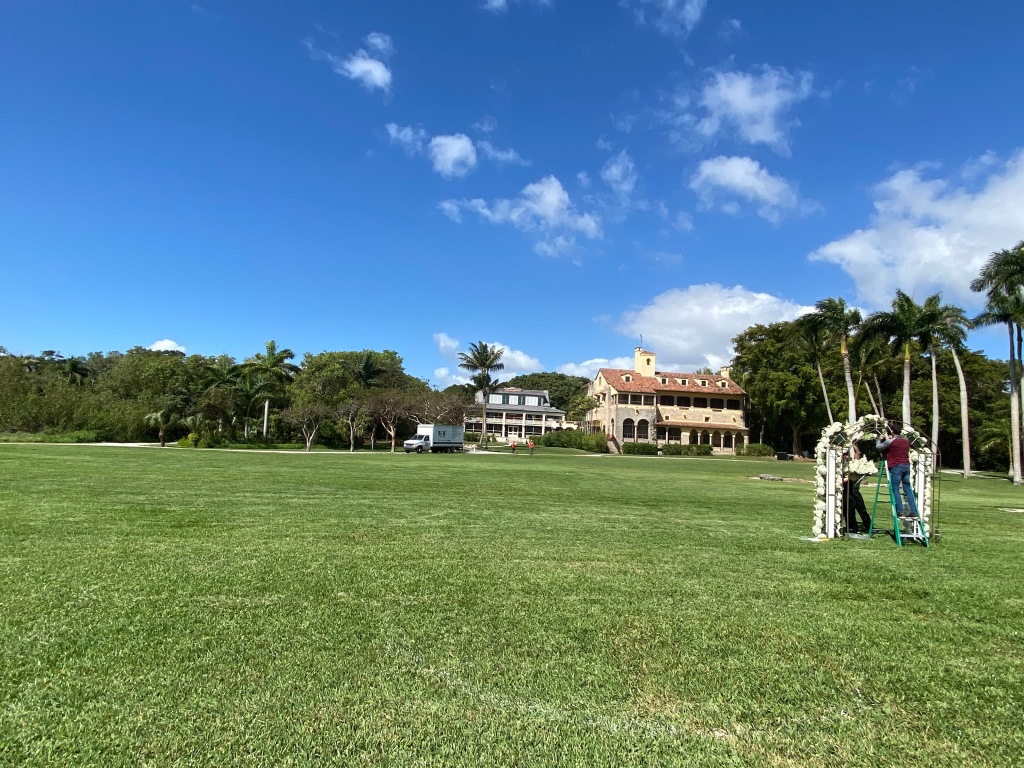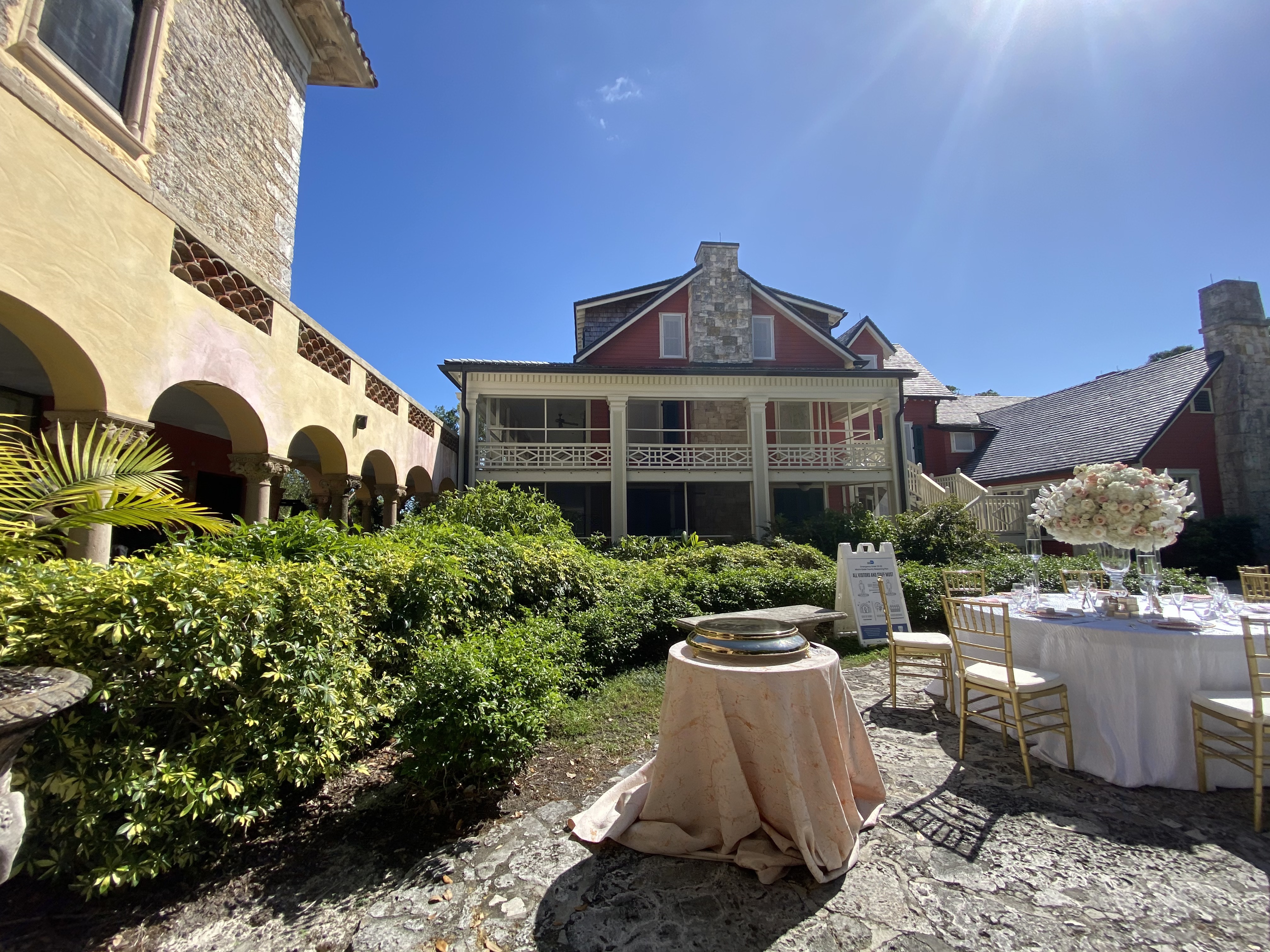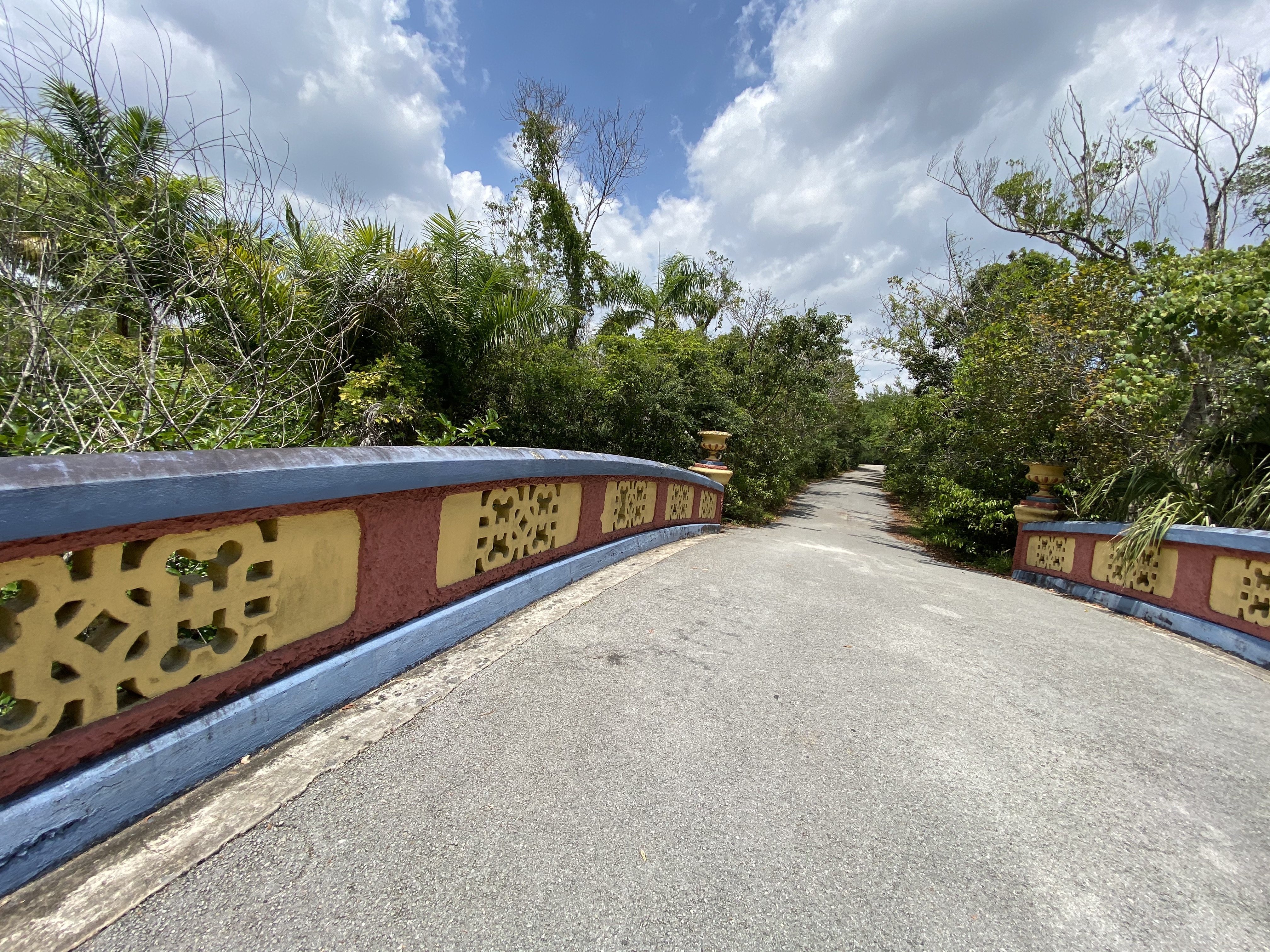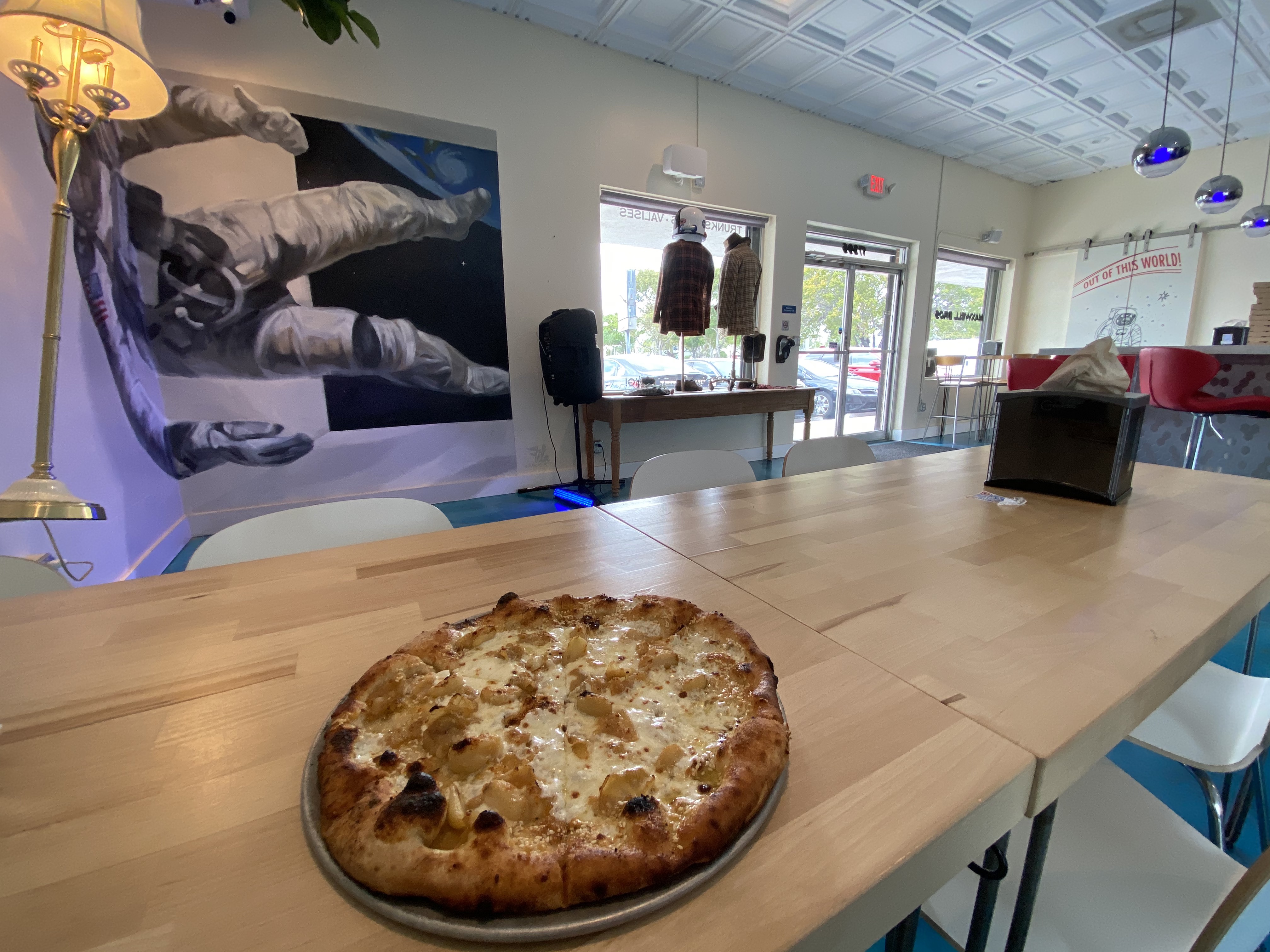
Biography:
Hello everyone! My name is Derick Plazaola and I am a junior at Florida International University currently working towards a dual Bachelor of Science degree within the fields of Anthropology and Geography while also in the progress of completing a minor in History. My primary passions in life include traveling, exploring nature, and reading historical documents. While at FIU, I have been able to become involved in the betterment of residential life through Parkview Hall Council and have undergone academic opportunities presented to me through the Honors College at the university. I wish to further my academic future by going into graduate school for additional subfield studies of Anthropology, with a certain interest in Archaeology above all other subfields.
Geography:

Situated on the east of U.S. Highway 1 and located north of Cutler Bay, Palmetto Bay is a small community village that is connected to the calm shores of Biscayne Bay. I found it to be a rather calm and peaceful location where one could take a retreat to enjoy moments of relaxation because of how easy it was to be next to the shore.
According to the official Village of Palmetto Bay website, the city was established in 2002 – now having almost marked 19 years since it was built. The incorporation of the city into the Miami-Dade counties marked Palmetto Bay as the 33rd municipality. With that being said, Palmetto Bay now serves as a residential home for over 24,000 people with that number most likely have increasing by today’s current time.
History:

Within the overarching history of Miami, a prominent theme of interconnection is one that is continually seen throughout many key destinations in the city. Palmetto Bay is no different as this theme of interconnection is reassured through the once-known presence of the Tequesta Indians within the area, notably via their inhabitation within the land that now recognized as being apart of the Deering Estate – one of the historical landmarks which I’ll later discuss. In addition to the Tequesta, there was also a presence of Paleo-Indians, Seminoles, Afro-Bahamians, and Anglo-Americans. However, the Tequesta were the ones who left a notable footprint upon the land as their burial land in Deering Estate – now recognized as the Old Cutler Fossil Site – was one of the biggest archaeological discoveries within South Florida that completely revolutionized the foundational knowledge of early human inhabitation, thousands of years ago, within South Florida. This influence of the Tequesta would, unfortunately, quickly disappear with the arrival of the Spanish to South Florida due to a transfer of diseases. This would lead to the complete disappearance of the Tequesta by 1700.
In the foundational history of the village of Palmetto Bay, the Perrine family grant would play a major role along with other the presence of other figures – notably Dr. William Cutler and Charles Deering – to begin the development of what would become Palmetto Bay. According to the Thalatta Estate timeline, Dr. Henry Perrine would become the recipient of a land grant, from the US congress, that would allow him to promote settlement and tropical plant agriculture in the area. However, this would be interrupted with his death, effectively placing a stop to the establishment of any settlements. To further add, this stop would be worsened by the failure of Henry Perrine Jr., the son of Dr. Perrine, in 1873. The development of Cutler in South Dade, named after Dr. Cutler, would change the development course of Palmetto Bay by slowly incorporating settlers towards the area of Palmetto.
Although the Perrine family had failed in utilizing the land grant, the land grant’s influence would retain importance and be passed on to figures who would fully utilize its power. Charles Deering was one such figure would eventually build his famous property on the shores of Biscayne Bay – starting in 1916 – along with the Chinese Bridge just outside of the gates of the Deering Estate. With the establishment of the Deering Estate then came the rise of a Mediterranean Revival through the construction of the Thalatta Estate in 1925 by the Connett family. Further construction in the area would be marked by the development of the Perrine Community House, as a result of the establishment of the Works Progress Administration of the Roosevelt New Deal in 1935, the Palmetto Bay Park Recreation Center – originally named the Perrine Park Recreation Center – in 1938 and the Perrine Jail in 1946. Finally, the Cutler Drainage Canal System – which still can be seen in various areas Palmetto Bay – was developed in the 1950s. Alongside all this development came an increase in settlement by many different people in the local area.
The establishment of Palmetto Bay as a municipality would not arrive until 2002 due to a years-long prior history of denial by the Boundaries Commission and Board of County Commissioners (BCC). According to the Palmetto Bay history site, this 7-year long lasting issue began in 1995 when the Alliance of Palmetto South Homeowners Association petitioned for the incorporation into the Miami-Dade counties. This petition would be deferred in 1996 and would lead to a lawsuit battle over the right of citizens to vote over incorporation. In 2000, the BCC would allow for the establishment of the Palmetto Bay Municipal Advisory Committee for any tasks and problems relating to incorporation. With this, incorporation finally came in 2002.
Demographics:
In terms of specific demographics regarding the citizens who live in Palmetto Bay, the Data USA census showcases that the specific number of residents who currently reside here is, at minimum, 24,6000. There is a near balance of both males and females as the Census Bureau lists the population as being 50.3% female and 49.7% male. Furthermore, Palmetto Bay is primarily ethnically composed of 42.8% Hispanic or Latino origin and 42.3% white non-hispanic. On the other hand, there are also minority populations showcased with a Black population of 4.49% and an Asian population of 5.09%. According to Data USA, the median age for those residing in Palmetto Bay is 41.1 and the median household income is around $115,709, marking a 7.5% increase to the number from 2020 – that being $107,612. Regardless of the increase, the high median household income number of over $100,000 details that Palmetto bay is a rather higher middle-class area of Miami, thus contrasting some of the more poverty-filled municipalities of the city.
Landmarks:
The Deering Estate
Once serving as a retreat vacation home for businessman Charles Deering and his family, the Deering Estate serves as a remarkable reminder for what a Spanish villa truly looks like. As previously mentioned in the history section (see above), the Deering Estate was built from 1916 to 1922 and serves as major source of Mediterranean revival influence. The active borrowing from other cultures was essential in the construction of the home as it would serve as a culmination of all of these different cultures all into one major source. However, this stone house was never seen as a house by the likes of Charles Deering. For him, the house was reminiscent to that of a museum in his eyes because of the incorporation of so many cultural values and aspects in its construction.
However, the history of the Deering Estate in not limited in just the history of its owner but in the history of the land upon which it is built. With the Tequesta having once inhabited the lands of the Estate thousands of years ago, this location serves a lens for which people can view into the past and see the true foundations of what Miami-Dade once was – prior to any development. With that said, people can visit the Deering Estate for a simple view towards the waters of Biscayne Bay, may make reservations for a wedding ceremony, or can even rent canoes and kayaks to take out to the surrounding islands, notably Chicken Key.
Chinese Bridge
Located on the nature trail right outside the front walls of the Deering Estate, the Chinese Bridge serves as a lens by which visitors can look into the experiences of Charles Deering. Built in 1918 on what was once known as “Old Cutler Road”, the bridge serves as a reminder for Deering into his past experiences as a young U.S. Naval officer when he was traveling across Asia. Without a doubt, the placement of this bridge brings an overwhelming sense of cultural identity compared to the nature-ridden swamp-like aesthetic of South Florida.
When walking to find this historical landmark, it almost felt like I was coming across a hidden gem because of the fact that it was hidden within this path. Previously, during Charles Deering’s time, I perhaps think that landmark was one that was appreciated more often. However, nowadays, I noticed that people were rarely stopping to take a look at it or take any photographs. I personally took an appreciation to this landmark because of its initial hidden physique, making it one that people had to actively search for in order to find.
Thalatta Estate
Only a couple minutes driving distance from the previously-discussed Deering Estate, the Thalatta Estate serves as yet another prominent source of Mediterranean revival art style present in South Florida. Built in 1925 by the Connett family, the Thalatta Estate is another such villa which offers its visitors a first-hand view towards the waters of Biscayne Bay. Quite similar to the Deering Estate, the Thalatta Estate is another notable venue that offers visitors the potential to make wedding reservations for those engaged.
Upon my arrival to the Thalatta Estate, my eyes were first set upon the presence of the magnificent tree placed in the middle of the driveway leading to the villa. Upon researching it, the Thalatta Estate’s official welcome page helped reveal that this was a Banyan tree. I thought that the placement of this tree here really helped in establishing the villa’s high-class status.
Green Spaces:
With each of the green spaces present in Palmetto Bay, I personally found that each area had its own advantages over the others as to what visitors could do in that space.
Thalatta Park
Located right behind the Thalatta Estate villa, Thalatta park offers a vast recreational space for its visitors to sit on the lawns of the villa. This park, specifically at the very end, offers its visitors a first-class view to the waters of Biscayne Bay. I found this park to be one in which visitors could dedicate their time and energy best towards relaxing and feeling the currents of the Biscayne Bay winds with plenty of walking space for those wishing to simply get outside.
Ludovici Park

Instead of offering a direct view towards the bayside, Ludovici park offers a quiet reserved space for those wishing to perhaps get a good reading out of a book. Connected right next to the Palmetto Bay Branch Library, Ludovici park offers many spaces for its visitors to dedicate their time to obtaining knowledge of all sorts. However, in addition to its quiet reserve spaces, Ludovici park is also recognized for being able to host musical performances and loud activities for all sorts, serving as a community gathering ground for the residents of Palmetto Bay. Thus, a sort of duality is taken into appreciation with the spaces of Ludovici park.
Bill Sadowski Park
Offering more of an adventurous and activity filled aura instead of a fully recreational and quiet space, Bill Sadowski park is a smaller green space located in a centralized area of Palmetto Bay in which residents can take their children and families alike to gather together, whenever the occasion calls for it. When I personally went, there was a gathering for boys scouts happening. In addition to this, the park offers a 0.3 mile trail in which its visitors can take time to exploring the ins and outs of the pathway, taking an appreciation for the surrounding nature.
Transportation:

For the most part when driving through Palmetto Bay, I found that most people stuck by conventional transportation means through their own vehicles. However, there were quite some exceptions to that. I found that a lot of the residents in the nearby area actually took an appreciation to biking since a lot of things were within a close radius of each other. Also, I saw people utilizing golf carts instead of conventional vehicles – most likely with the intention on saving money not having to drive a normal vehicle. Finally, there was still a utilization of buses within Palmetto Bay as there were bus stops all around for those who needed to utilize them.
Food:
Greek House Kitchen

Offering a grand menu of classic Greek dishes and meals, Greek House Kitchen is a dining establishment that truly provides you with a classic, yet richening Greek experience when it comes to the selection of unique nourishment. I personally ordered the wrapped Chicken Gyros (pictured above) and was extremely satisfied with the amount of food which they provided me with. Greek House Kitchen is located at 17041 S Dixie Hwy in Palmetto Bay.
Maxwell Bros. Clothing Store
Probably my most favorite food establishment from this list, Maxwell Bros. Clothing Store is a pizza and beer based dining establishment located at 17395 S Dixie Hwy. The establishment, which features a bar, takes on a sort of classic retro-oriented space theme that fully compliments the overall vibe of the establishment. Without a doubt, I found it to be the more unique dining locations that I went to because of this welcoming aura presented with the location. Even when I was dining in, a customer entering the establishment said “oh! This was not what I expected!” in a highly positive tone, showing the uniqueness to the place.
Walter’s Coffee Shop

Walter’s Coffee Shop, located at 17009 S Dixie Hwy, is more of a classic restaurant type of location – a perfect location if you are looking to have whole breakfast or lunch meals with your family. Featuring both an outdoor and indoor dining option, Walter’s is a classic choice for anyone seeking to dine from a classic American menu of well-nourishing food options. I personally ate a classic french toast when I went there in the morning to start my day off right.
Businesses:
Babe’s Meat & Counter

Serving as a small meat butchery shop, Babe’s Meat & Counter is a perfect location if you are wishing to obtain different kinds of meats for any meals you seek to prepare at home. Located at 9216 SW 156th St, Babe’s also features a small menu of food selections for those wishing to grab a meal to go from this business.
Milky Way Cereal Bar

Located at 17013 S Dixie Hwy, the Milky Way Cereal Bar is easily a sort of heaven for those with a sweet tooth. Here at this small shop, you can mix and match different kinds of desserts with a wide selection of add ons and toppings to your selection. Most interesting of all, this shop utilizes cereal in their items. This gives it a unique approach as customers can interchange with their favorite cereals mixed in tangent with their selection.
Golden Rule Seafood

Simultaneously a market and a dine-in restaurant, Golden Rule Seafood serves the best of both worlds to customers as you can either dine-in to the vast selection of food offered at the restaurant or you can take your time and pick through the items offered in the market – both next door to each other. This unique approach gives the business even more customers by being able to still offer unique selections of seafood at the butchery while also providing meals for customers only a couple footsteps away. Golden Rule Seafood is located at 17505 S Dixie Hwy.
Summary:
In terms of what works, I find that Palmetto Bay is a quiet yet, at the same time, busy part of Miami by being able to offer a sort of duality that is not found in other parts of the overarching city. For one, residents and visitors alike can take the time to have a more recreational experience by visiting historical landmarks that undoubtedly lure in the visitors due to their rich history and the possibility to experience the Biscayne bayside. On the other hand, Palmetto Bay features a vast selection of businesses and food locations which people can visit and enjoy their time at with their families. What allows these both worlds to work so well is the lack of distance between all of these things. As I personally was going through Palmetto Bay, I found that it did not take too much time at all to arrive at the next location which I was interested in viewing or visiting. Even without a car, I find that the people here are still able to arrive at their desired location relatively quickly, adding towards the success of the overall area.
Works Cited:
“Chinese Bridge Historical Marker.” Historical Marker, 16 June 2016, http://www.hmdb.org/m.asp?m=79320.
“History of Palmetto Bay: Palmetto Bay, FL.” Village of Palmetto Bay Florida, http://www.palmettobay-fl.gov/681/History-of-Palmetto-Bay.
“Palmetto Bay, FL.” Data USA, datausa.io/profile/geo/palmetto-bay-fl.
United States Census Bureau, http://www.census.gov/quickfacts/palmettobayvillageflorida.
“Welcome to Palmetto Bay: Palmetto Bay, FL.” Village of Palmetto Bay Florida, http://www.palmettobay-fl.gov/431/Welcome-to-Palmetto-Bay.
“Welcome to Thalatta Estate.” Welcome to Thalatta Estate | Thalatta Estate, http://www.thalattaestate.com/welcome-thalatta-estate.











